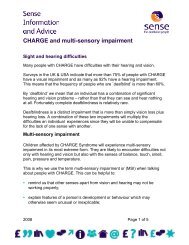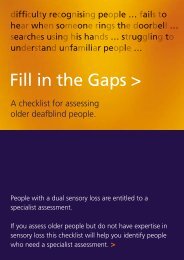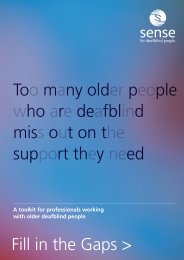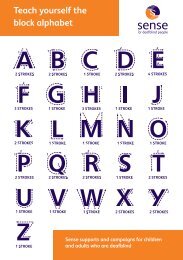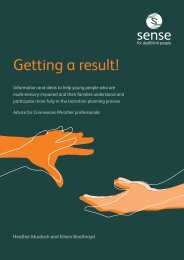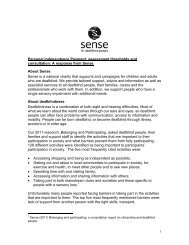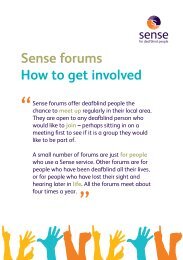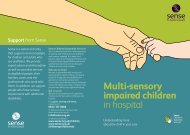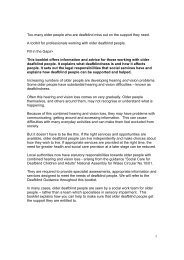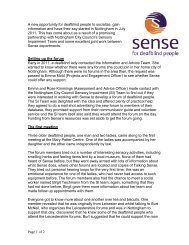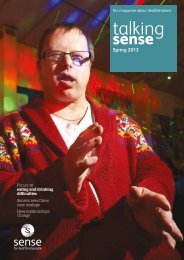MSI Unit Curriculum - Sense
MSI Unit Curriculum - Sense
MSI Unit Curriculum - Sense
You also want an ePaper? Increase the reach of your titles
YUMPU automatically turns print PDFs into web optimized ePapers that Google loves.
Victoria School: <strong>MSI</strong> <strong>Unit</strong> <strong>Curriculum</strong>Intensive Interaction student-centred curricular approach developed by Nindand Hewett. Staff use a student’s behaviour as the basis for communication,interpreting, reflecting and responding to the student’s actions and giving himor her the lead role in the interaction.intentional communication interaction intended to convey a particularmessage.interaction any contact or communication between two or more people orbetween a person and the physical environment. It need not be intentional.joint attention sharing a focus of attention with another person by attendingsimultaneously to a person and an object or event.keyworker member of staff working closely with a specific pupil and involvedin the planning, delivery and evaluation of their programme. Pupils may havemore than one keyworker, and a staff member may be keyworker for morethan one pupil.kinaesthetic/proprioceptive using sensory receptors in joints and muscles whichgive information about position, orientation and movement.landmark a recognisable key point on a route. Landmarks may be visual, tactile,auditory and/or olfactory, but to be useful they must be available every timethe route is travelled.Little Room a particular kind of very small environment, pioneered by LilliNielsen, built from textured wooden panels to which small objects can beattached.mapping the environment developing an understanding of how an area fitstogether, in terms of walls or other boundaries, entrances and exits, floor/ground and wall surfaces and other features such as furniture or plants.Pupils with useful sight are likely to develop a 3-d spatial awareness, whilstprofoundly visually impaired pupils are likely to develop a sequentialawareness of what is next to what.noise/sound sound is what you want to listen to; noise is other auditory inputwhich gets in the way. The terms are also used in other contexts – for example,behavioural noise: extraneous behaviours which make it hard to identify howand what a pupil responds to.non-symbolic communication intentional communication which does notuse symbols – ie: which does not use actions, sounds or graphics to representmeanings. Pointing or taking another person to something wanted areexamples. Also known as presymbolic, non-verbal or preverbal communication.145




